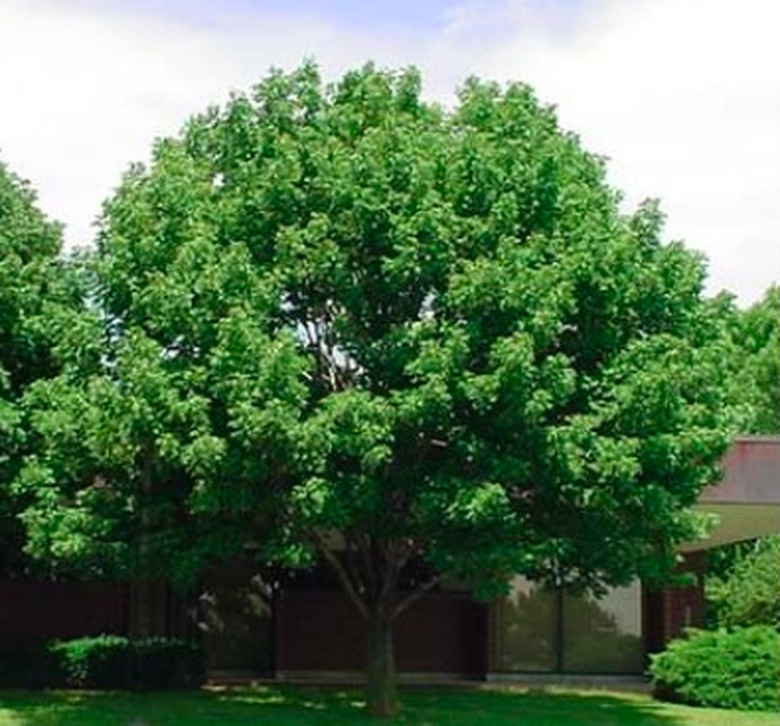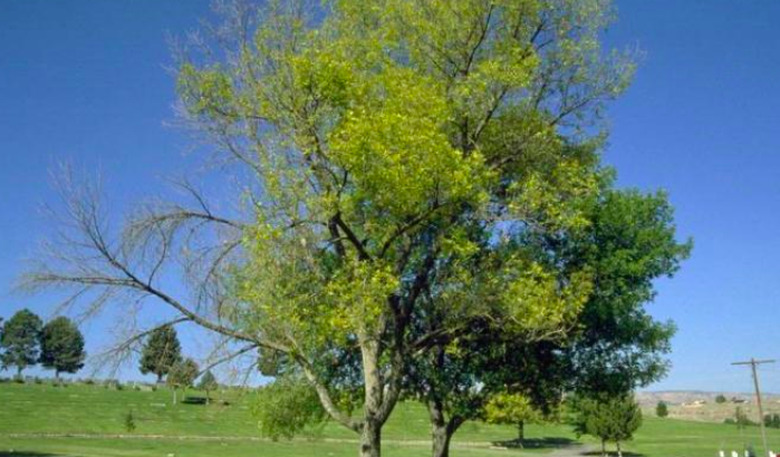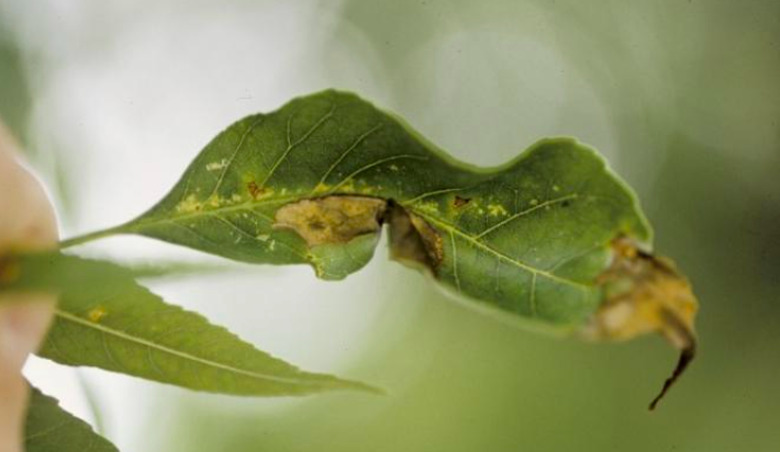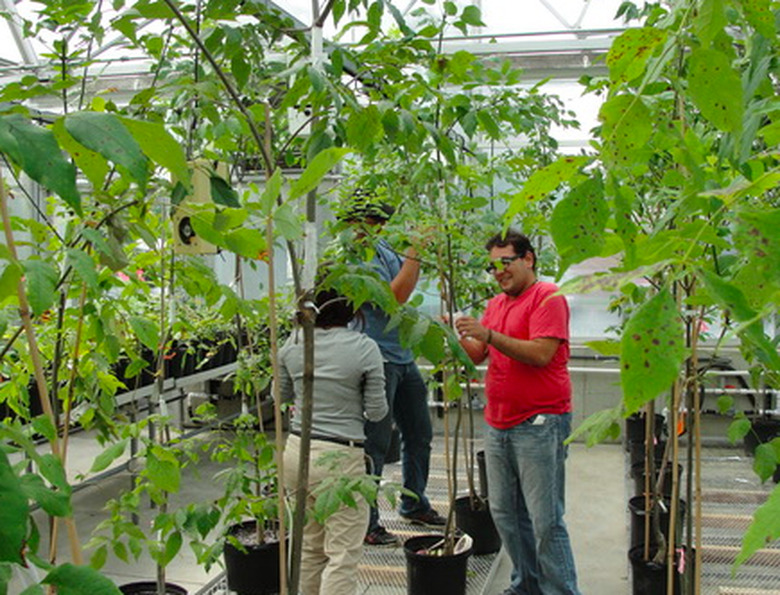Ash Tree Diseases And Problems
Over 60 species of ash trees (Fraxinius spp.) grow around the world. In North America, the most common is white ash (Fraxinus americana), which grows in the eastern United States and Canada. Ash trees tend to prefer the cooler, moister climates of the eastern regions, but some species grow in the Midwest and West. Blue ash (Fraxinus quadrangulata) grows in the central U.S. in USDA zones 4 to 6, Oregon ash (Fraxinus latifolia) is found in the Pacific Northwest in zones 7 to 9 and California ash (Fraxinus dipetala) inhabits parts of California, Nevada and Arizona. Some species, such as Gregg's ash (Fraxinus greggii) can even grow as far south as zone 10. In short, no matter where you live in the United States, there's an ash species for your yard.
With its lush green canopy of complex leaves and its whitish bark, the deciduous ash tree is a favorite of landscapers, who planted many in the wake of the die-off of elms during the Dutch elm disease epidemic. Ash trees can grow large, up to 100 feet in height, and they are hardy and relatively resistant to disease, provided they are growing in moist, well-draining soil.
Like elm trees, ash trees have their own specific banes in the form of the emerald ash borer (EAB) and ash yellows, both of which are usually fatal to the tree. A number of other pests and diseases infect ash trees, and some can be fatal, but they are often treatable. They can produce symptoms similar to fatal diseases, however.
Dealing with Emerald Ash Borer
Dealing with Emerald Ash Borer
The emerald ash borer (Agrilus planipennis) is a green jewel beetle native to Asia that was transplanted to North America. Since its discovery by Michigan State arborist David L. Roberts in 2002, it has spread to 33 states and three Canadian provinces, with five states confirming its presence in 2018. It is the larvae of the insect that cause most of the damage, feeding on the inner bark of the tree and disrupting water and nutrient transfer.
When the adults emerge in the spring, they leave D-shaped holes in the bark, which make the tree vulnerable to fungal and bacterial diseases. The holes are signs of an infestation, as is an unusual amount of woodpecker activity, since the birds feed on the larvae. The bark splits vertically, and if you remove the bark and look underneath, you'll see the S-shaped tracks left by the burrowing larvae. The tree gradually dies back from the crown, although it may take a few years to die completely. By itself, foliage die-back isn't conclusive evidence of EAB, however.
If you suspect your ash tree might be infected with EAB, you may be able to save it, but the decision rests on a number of factors:
- Is the tree still healthy? It probably won't survive if it has several dead branches or has lost more than half its leaves.
- Is the tree showing only a few EAB symptoms? Treatment is most effective in the early stages of infestation.
- Is the tree valuable? If not, it may be best to cut it down to prevent the beetles from spreading.
The feasibility of treatment depends on the size of the tree. If the trunk is smaller than 2 feet in diameter, a soil drench containing an insecticide can be applied by the homeowner in spring to kill the beetles. Professional insecticide treatment, which requires injection through the trunk, is required for larger trees.
Ash Yellows Is a Slow Killer
Ash Yellows Is a Slow Killer
Ash yellows affects both white and green ash trees. It is caused by a microorganism called Candidatus fraxinii that affects the tree's vascular system, and it may be spread through the soil or carried by insects such as leafhoppers. The leaves of the tree turn pale green or yellow before falling off, and the branches die over the winter. A particularly susceptible tree can die completely in 1 to 3 years.
This disease can be treated in its early stages by pruning affected branches and spraying affected areas of the tree with a fungicide. Make sure the soil around the tree is well fertilized to give the tree the nutrition it needs to fight the disease. There is no cure for ash yellows, so if more than 30 to 50 percent of the foliage has died back, the tree should be cut down to prevent the disease from spreading.
Verticillium Wilt and Ash Anthracnose
Verticillium Wilt and Ash Anthracnose
Two fungal diseases can produce wilting, dieback and other symptoms similar to EAB infestation and ash yellows, and they can be just as deadly. Verticillium wilt causes gradual foliage die-back and eventual death, and it is incurable once it has entered the tree. Ash anthracnose also affects the leaves, giving them purple and brown spots and forcing them to drop prematurely.
Fungal diseases can be controlled in the early stage by pruning affected branches and fertilizing the soil with a low-nitrogen, high-phosphorous blend to ensure the tree has the nutrient it needs to fight the diseases off. You may be able to kill fungi in the soil by solarization—tilling and overturning the soil to a depth of 6 inches and covering it with clear plastic to heat the soil with sunlight. Once a tree has lost half of its foliage, it should be cut down.
Most Other Problems Are Treatable
Most Other Problems Are Treatable
Ash trees are vulnerable to a number of other pests, including ash plant bugs, aphids and oystershell scales. These can usually be controlled with insecticide sprays and soaps. If left untreated, these pests will cause damage similar to more serious diseases, such as wilting leaves and premature dropping, but the tree usually recovers over the winter.
A number of other fungi can infest ash trees, including ash rust, which causes the leaves on infected trees to develop yellowish-orange spots and eventually die. This is a minor disease, but if it occurs repeatedly, the tree can weaken and become susceptible to other, more serious, diseases. Signs of a fungal infection include discolored and deteriorating bark as well as bluish mildew on the leaves. Regular treatment with a fungicide is recommended.




